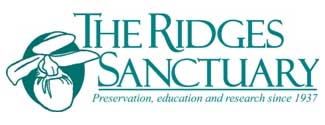Marne Kaeske will give a short introduction on using GPS technology to map the locations of invasive species to be added to the Door County mapping project.
Wikipedia explains it clearly: “The Global Positioning System (GPS) is a space-based global navigation satellite system that provides reliable location and time information in all weather and at all times and anywhere on or near the Earth when and where there is an unobstructed line of sight to four or more GPS satellites. It is maintained by the United States government and is freely accessible by anyone with a GPS receiver.”
 On Tuesday Aug 24, beginning at 9 am you can learn how to map invasive populations using a GPS device and share that information with others over the Internet. Marne Kaeske, Ridges’ Stewardship Coordinator, will spend the morning teaching and taking participants out to do field work at The Ridges, so bring boots and a GPS device if you have them. She will also have some boots and a few GPS units to share.
On Tuesday Aug 24, beginning at 9 am you can learn how to map invasive populations using a GPS device and share that information with others over the Internet. Marne Kaeske, Ridges’ Stewardship Coordinator, will spend the morning teaching and taking participants out to do field work at The Ridges, so bring boots and a GPS device if you have them. She will also have some boots and a few GPS units to share.
The Ridges Sanctuary is now heading up the Door County Invasive Species Team and has a created a model program that meets each Tuesday to fight invasives. They are fighting off the invasion as a team, known to many as the Barberry Pirates.
They say, “The Sanctuary is UNDER ATTACK! In the swales and on the ridges, new infestations of invasives are popping up. The Barberry Pirates remain vigilant in our efforts to stop the invasion. But we need MORE Pirates to be pro-active with the new threats to the Sanctuary!”
“Please let us know if you can make it so we can plan our attack!” Marne adds, “Lemonade and snacks after the fray! …to fight of the scurvy.”
There is no charge to participate and you are asked to meet at the Upper Rangelight at The Ridges in Baileys Harbor. Please, call 920.839.2802 to RSVP.
The Ridges Sanctuary is a 1,600 acre pristine natural area located in Door County, Wisconsin. Formed in 1937, it’s the oldest private nature preserve in the state. The Ridges is designated as a State Natural Area, a National Natural Landmark, an Audubon Important Birding Area, and a Wisconsin Wetland Gem.



